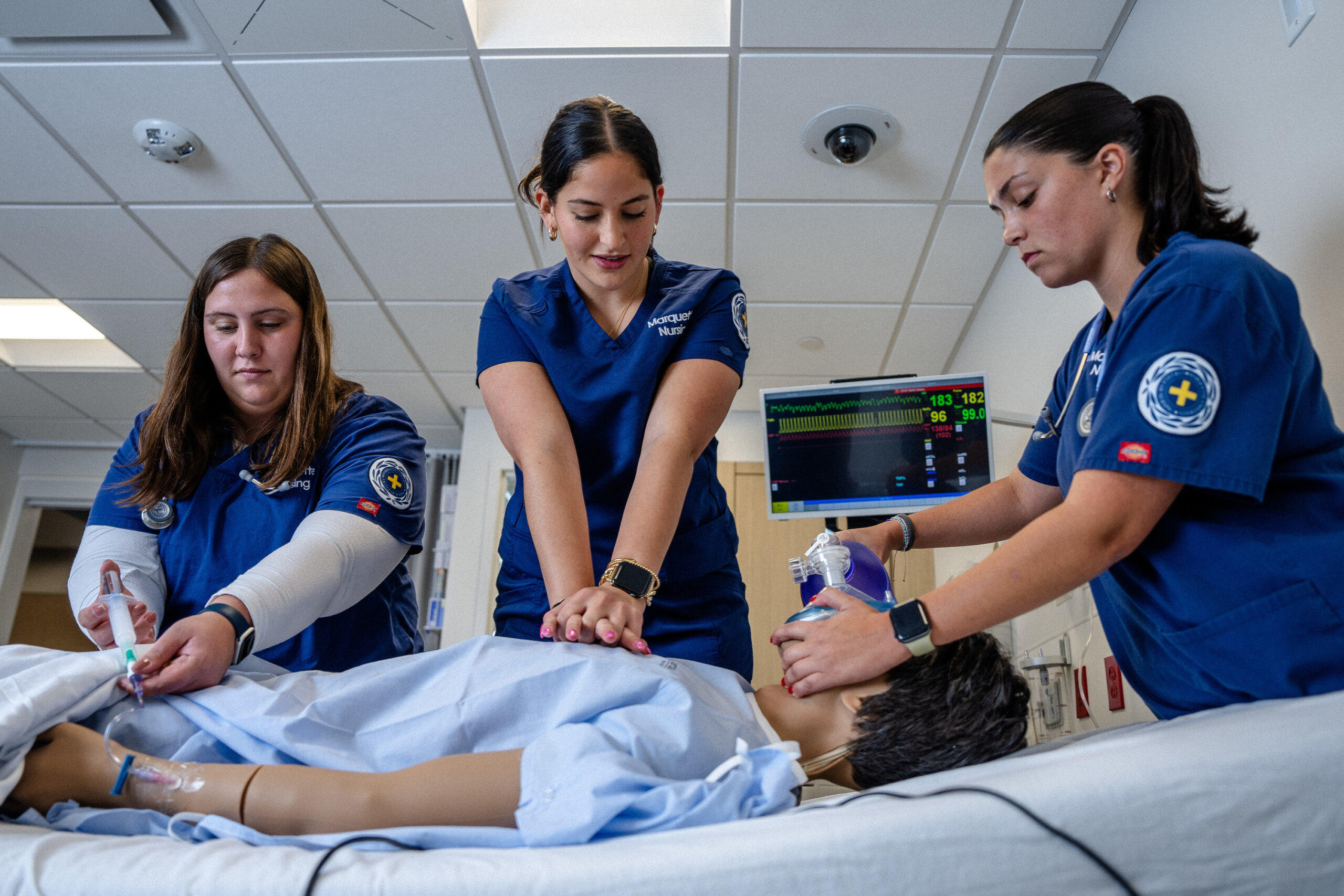The College of Nursing has received a $1.6 million grant from the U.S. Department of Education to support an expansion of its simulation center and equipment investment.
The funds provided for the Health Education and Retention Optimization through Equipment and Simulation (HEROES) project will enable the college to address a nursing shortage in Wisconsin and across the nation by meeting its goal of preparing 5,000 entry level nurses to enter the workforce in the next decade.
“Wisconsin is facing a future critical shortage of nurses. The pandemic accelerated this and highlighted health disparities in our state and country,” said Dr. Jill Guttormson, dean of the College of Nursing. “Marquette and the College of Nursing’s mission has been to meet this demand by expanding capacity to educate a diverse and skilled workforce of nurses trained in the Catholic, Jesuit tradition of caring for the whole person. Our goal of nearly 5,000 new Marquette nurses includes increasing diversity in our program.
“This grant expands our capacity to train more nurses at a continuing high level.”
A limiting factor for program growth is sufficient clinical sites. To ensure readiness for practice, the College of Nursing will implement a multipronged approach, including enhanced simulation experiences known to support clinical judgement and practice readiness.
“We are grateful to our partners in government for seeing a real need to supply and reinforce the staffing pipeline for nurses in Wisconsin,” Guttormson added. “Thanks to the efforts of Rep. Gwen Moore and Sen. Tammy Baldwin, our expanded simulation centers will supplement the scholarships, pipeline programs and holistic support currently in place to further advance the goal of increased diversity of students and future nurses. Preparing a workforce to provide competent and patient-centered care to urban and rural populations is imperative to help improve outcomes, address health disparities and meet the needs of Wisconsin communities.”



